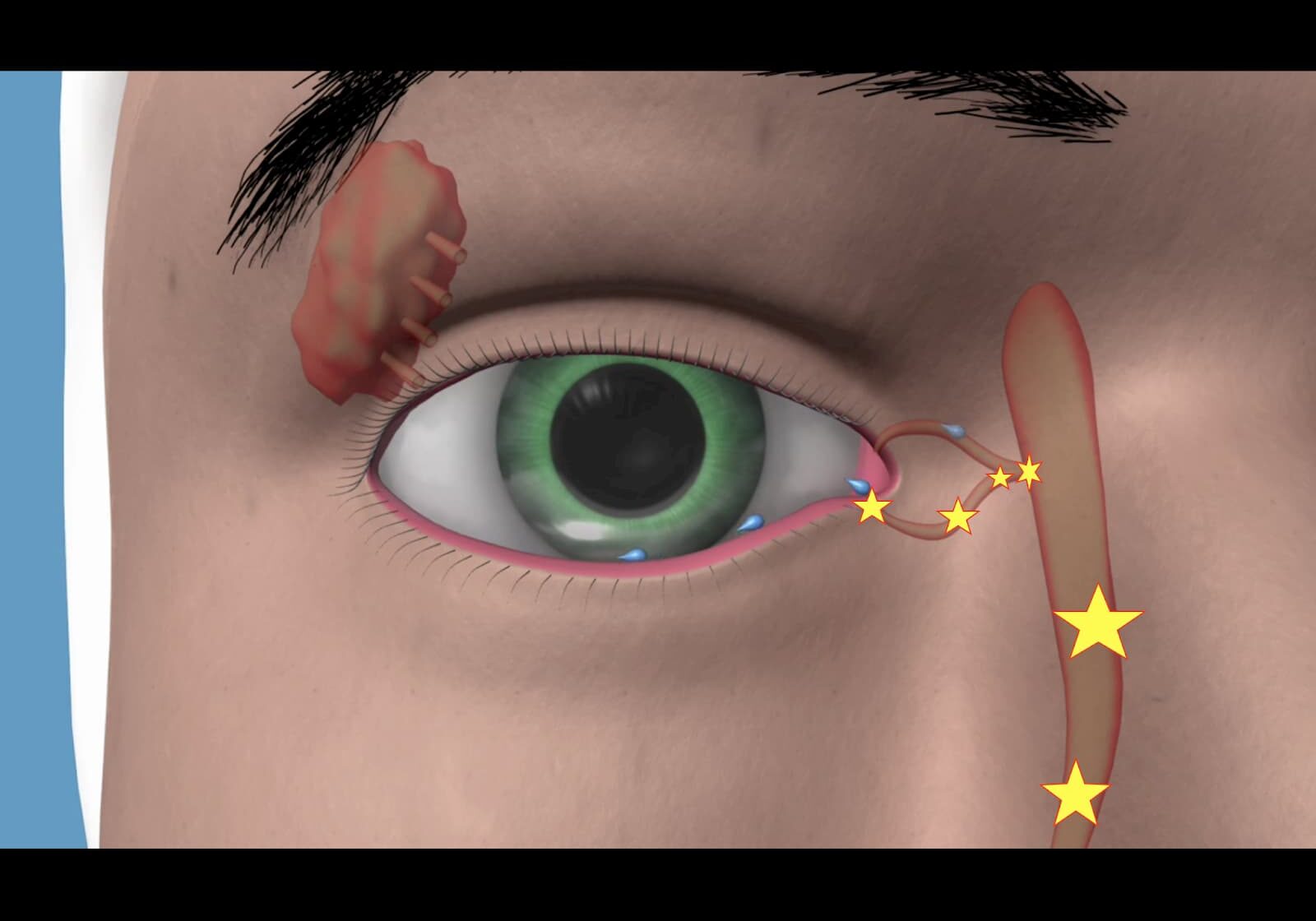Call
Patient Enquiry
Professional Enquiry
Mr Uddin has been treating both children and adults with watery eyes for over 25 years. He understands how much of a nuisance, socially embarrassing and uncomfortable it can be. He also very aware that the perception of water filled eyes and crying can lead to social and professional misunderstanding. Mr Uddin has expertise in nasolacrimal (tear) duct surgery and performed the first endonasal dacryocystorhinostomy (DCR) at Moorfields Eye Hospital nearly twenty years ago.
"It's important to ascertain the cause of the watery eye. This may be due to excess tear production, abnormalities in the lid position, or problems with outflow drainage of tears. Treatment needs to be tailored to the cause, which can sometimes be multifactorial, and often is non-surgical."

Normal flow of tears

Potential areas of tear drainage blockage
Is it normal to have watery eyes?
Some watery eyes are normal, especially in cold weather, wind or dusty environments. Tears naturally lubricate, protect and nourish the eyes. At times, the tear-drainage system (lacrimal system) may fail to adequately drain tears from the surface of the eye surface into the nose. This can cause excessively watery eyes, also known as Epiphora.
How can watery eyes be treated?
For many, issues with watery eyes can be improved by treating the underlying cause such as blepharitis, dry eyes or an eyelid problem. In some cases where there is a blockage in the overall system or tear duct, surgery may be necessary. A botulinum toxin (Botox) injection is sometimes used for those with crocodile tear syndrome.
The type of surgery required depends on what is causing the tear drainage dysfunction.
Eyelid Surgery
Eyelid surgery is performed if the eyelid is in abnormal position (entropion/ectropion). Punctoplasty surgery is usually performed when there is a blockage in the tear puncta (tiny holes in the inside corners of the eyelids where tears first drain). The procedure involves enlarging these holes, allowing tears to drain more easily. This is usually done under local anaesthetic and takes about 30 minutes.
DCR Surgery
If the underlying cause is an obstruction in the nasolacrimal (tear) duct, an operation called a dacryocystorhinostomy (DCR) is frequently performed. This procedure allows tears to bypass the blockage, by creating a new connection between the tear duct sac and the nose. This is an effective operation for most children and adults, with a success rate of over 90%. If there is a nasal condition that also needs to be addressed, this can be done at the same time by an Ear, Nose and Throat (ENT) surgeon.
There are two methods of DCR surgery, external DCR and endoscopic endonasal DCR (EndoDCR). With an external DCR a small incision (1cm) is made on the side of the nose to gain access to the tear sac. With EndoDCR there are no skin incisions and therefore no scarring. The entire operation is performed through the nose using a small camera (endoscope). With both of these approaches, small soft rods are somtimes inserted internally to make sure the new passage remains open during the healing process. The surgery takes about forty minutes to an hour and is frequently performed under general anaesthetic but can be done under local anaesthetic with sedation.
Lester Jones Tubes
In complex cases or where the canaliculus (channel near inner corner of eyelid) is blocked a Lester Jones tube may be used. This is a small glass tube that is inserted into the corner of the eyelid, which acts as a channel for the tears to drain into the nasal space.
Contact us
Moorfields Private Outpatient Centre
London (Central London)
Moorfields Private Practice
London (Central London)
Parkside Hospital
Book a consultation today




